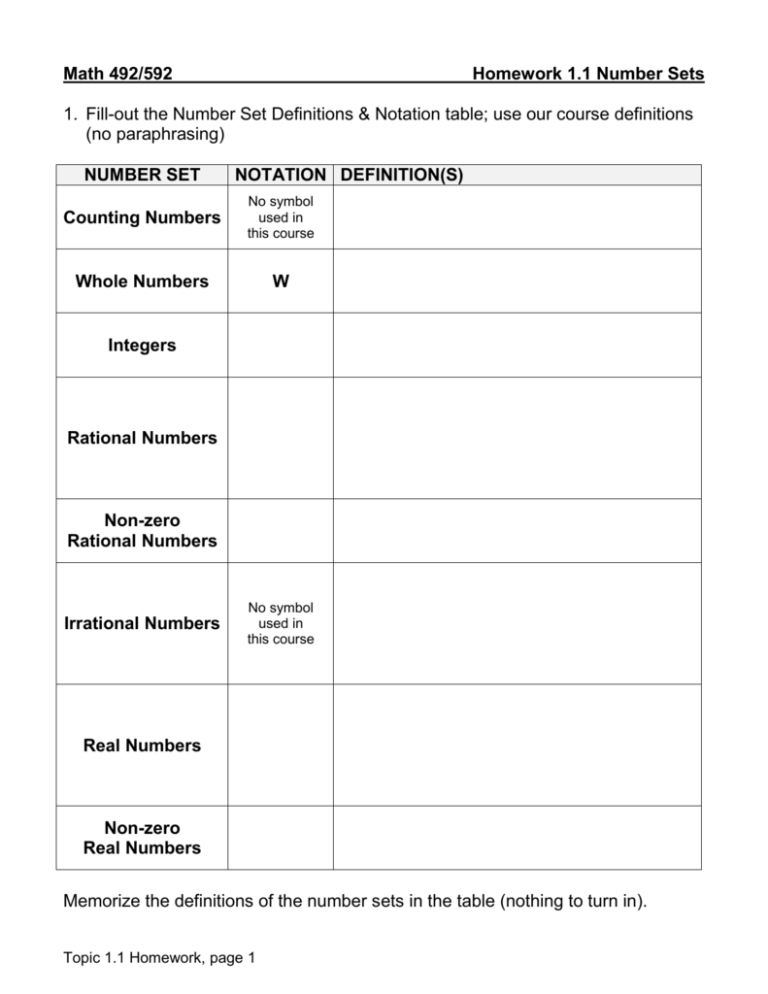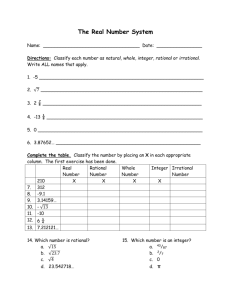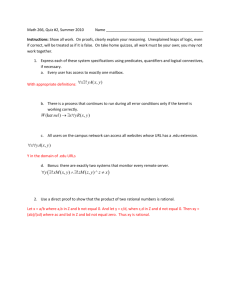Topic 1.1 Number Sets HW
advertisement

Math 492/592 Homework 1.1 Number Sets 1. Fill-out the Number Set Definitions & Notation table; use our course definitions (no paraphrasing) NUMBER SET NOTATION DEFINITION(S) Counting Numbers No symbol used in this course Whole Numbers W Integers Rational Numbers Non-zero Rational Numbers Irrational Numbers No symbol used in this course Real Numbers Non-zero Real Numbers Memorize the definitions of the number sets in the table (nothing to turn in). Topic 1.1 Homework, page 1 2. For each part, give two examples of such numbers, or if two examples are not possible, briefly explain why. Example: An integer that is not a whole number: -1, -492 a. An integer that is a whole number b. A whole number that is not a counting number c. An integer that is a rational number d. A fraction that is a rational number e. A fraction that is not a rational number f. A real number that is not a rational number g. A real number that is a rational number h. A square root that is a rational number i. A square root that is not a rational number j. A rational number that is not a real number k. A fraction that is an integer l. A fraction that is not an integer, but is a rational number Topic 1.1 Homework, page 2 3. Prove each of the following using the definitions of the number sets. Use appropriate notation. a. Q R b. 3 is a rational number. 7 c. 4.929229222922229222229 . . . is not a rational number assuming the pattern of 9’s and 2’s continues (a 9 is followed by one 2, then a 9 followed by two 2’s, then a 9 followed by three 2’s, etc.). d. -26.88865932 is a rational number. Topic 1.1 Homework, page 3 4. The following is from a middle school math text book. (It shall remain nameless to protect the guilty!) Example 2a is misleading when one compares it to the given definition of “irrational number.” Why? (Hint – don’t forget to use your own calculator to follow the given directions) Topic 1.1 Homework, page 4







